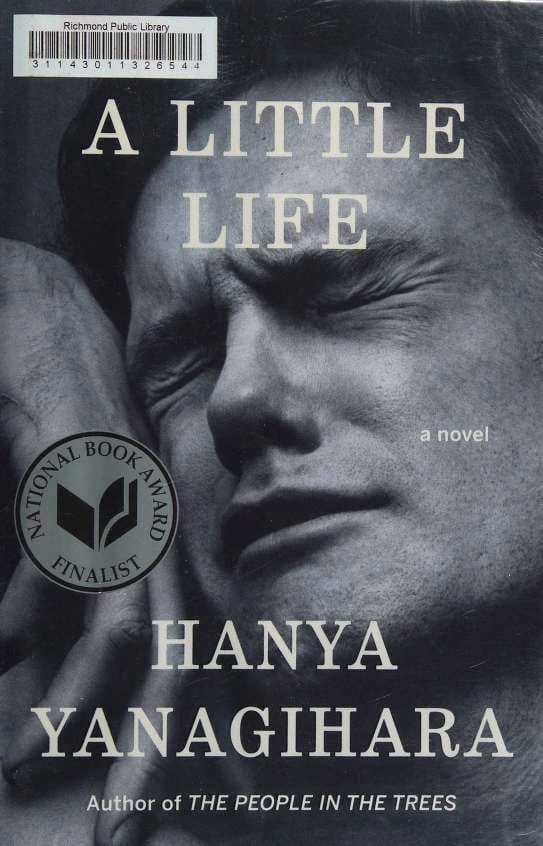Exploring the Heartbreak and Hope of “A Little Life”

Introduction to “A Little Life”
Since its publication in 2015, Hanya Yanagihara’s “A Little Life” has ignited passionate debate among readers, critics, and book-club circles. The nearly 800-page novel follows four college friends as they carve out careers, relationships, and identities in New York City. At its core, however, the story orbits the enigmatic Jude St. Francis and the lifelong impact of his traumatic childhood. Blending lush prose with unflinching depictions of pain, the book has become a modern classic of literary fiction, earning a spot on the Booker Prize shortlist and cementing its place in contemporary culture.
Brief Plot Overview
“A Little Life” opens with Jude, Willem, Malcolm, and JB—an inseparable quartet navigating post-graduation life. Willem chases acting gigs, JB hones his skills as a painter, Malcolm designs high-end buildings, and Jude excels as a litigator. While the novel traces each man’s professional rise, Yanagihara steadily tightens the lens on Jude, whose past is revealed through heartbreaking flashbacks. As physical ailments worsen and emotional scars deepen, Jude’s friends grapple with how to support someone who believes himself beyond saving. The narrative spans three decades, illustrating the evolution of friendship, the persistence of trauma, and the bittersweet nature of success.
Major Themes
Friendship as Family
One of the book’s most celebrated elements is its nuanced portrayal of chosen family. Jude’s biological relatives are absent or abusive, so his sense of belonging is forged through friendships with Willem, Andy, Harold, and Julia. Yanagihara spotlights how loyalty, patience, and compassion can substitute for blood ties, challenging traditional notions of what constitutes a family unit.
Trauma and Recovery
“A Little Life” does not shy away from describing sexual abuse, self-harm, and depression in graphic detail. Rather than exploiting pain for shock value, the narrative asks readers to confront the harsh reality of survivors who live with lingering wounds. Jude’s struggle illustrates that healing is rarely linear; progress coexists with relapse, love with self-loathing. The novel ultimately proposes that while trauma may be permanent, empathy can soften its sharpest edges.
The Cost of Ambition
Every central character pursues an ambitious career, reflecting the magnetic pull of New York City. Yet success carries a price. JB’s fame feeds his addiction, Malcolm’s prestige distances him from his roots, and Willem’s stardom clashes with Jude’s need for privacy. Yanagihara invites readers to question society’s equation of achievement with happiness, revealing the emotional toll of relentless striving.
Unforgettable Characters
Jude St. Francis anchors the story with his brilliance, generosity, and hidden agony. Willem Ragnarsson, an aspiring actor from rural Wyoming, is Jude’s steadfast confidant and later romantic partner. JB Marion embodies artistic talent and ego in equal measure, while Malcolm Irvine wrestles with privilege and purpose. Secondary figures—Dr. Andy Contractor, law professor Harold Stein, and charitable Julia—round out a cast that embodies the novel’s exploration of loyalty and love. Each character is drawn with psychological depth, ensuring that readers feel personally invested in their joys and tragedies.
Critical Reception and Controversy
“A Little Life” quickly polarized reviewers. Admirers praised its scope, emotional intensity, and fearless dive into taboo topics, often comparing Yanagihara’s style to that of Donna Tartt and Jonathan Franzen. Detractors labeled the work “trauma porn,” arguing that the relentless suffering borders on gratuitous. Regardless of stance, few can deny the novel’s cultural impact: it spawned countless think pieces, inspired viral TikTok reactions, and remains a perennial best-seller in literary fiction. Its ability to spark discourse is proof of fiction’s power to challenge comfort zones.
Why You Should Read “A Little Life”
If you crave novels that linger long after the final page, “A Little Life” delivers an unforgettable experience. The story’s emotional gravity forces introspection about how you treat loved ones, how society supports survivors, and how success is defined. Yanagihara’s meticulous character work turns abstract themes—resilience, compassion, mortality—into visceral realities. For readers seeking an engrossing, if sometimes harrowing, reflection on the human condition, this book is essential.
Final Thoughts
Reading “A Little Life” is less a leisurely pastime and more an immersive journey through darkness toward flickers of light. Yanagihara balances despair with devotion, reminding us that even the most damaged souls can find solace in genuine connection. While the novel’s intense subject matter may not suit everyone, its literary merit and emotional resonance are difficult to dismiss. Whether you finish the book feeling devastated, inspired, or conflicted, one thing is certain: the story of Jude, Willem, JB, and Malcolm will stay with you, challenging and changing the way you understand suffering, friendship, and ultimately, life itself.